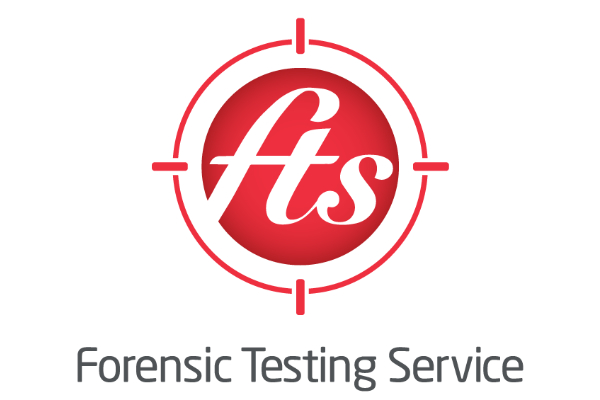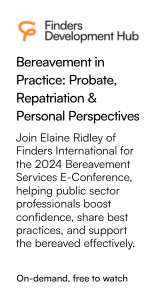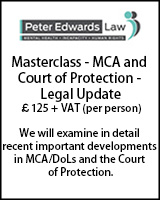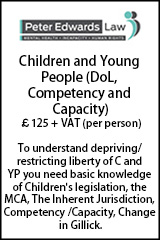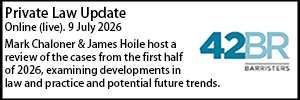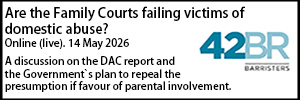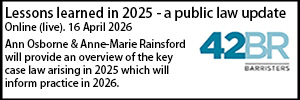Court of Appeal issues ruling on evidential value and reliability of hair strand drug testing
- Details
The Court of Appeal has allowed an appeal against a judge’s decision to authorise the removal of three children from the care of their maternal grandmother and uncle, which was largely based upon three sets of hair strand testing reports.
In D, Re (Children: Interim Care Order: Hair Strand Testing) [2024] EWCA Civ 498, Mr Justice Cobb concluded that Her Honour Judge Jacklin KC was wrong to attach “such presumptive weight” to the hair strand test results and that she did not consider sufficiently "the context of the broader picture" of evidence.
The case concerned altogether four children – three girls, A, C and D, and a boy, B. However, the appeal focussed on a judge's decision in relation to the three girls (A, C and D) only.
Outlining the background, Mr Justice Cobb said in July 2022, C (then aged four years old) was admitted to hospital exhibiting “abnormal behaviour”.
Subsequent blood testing confirmed a likely overdose of topiramate, a medication used to manage and treat epilepsy and migraine which had been prescribed for her older sister, A.
Almost exactly one year later, C was once again admitted to hospital. The blood tests again confirmed high levels of topiramate.
Following the intervention of the local authority, A, B and D were placed with their maternal grandmother, whose care of the children was supported by the children's maternal uncle.
In August 2023, C was discharged from hospital and joined her siblings.
In September 2023, the local authority applied under Part IV CA 1989 for care orders and interim care orders in respect of all four children.
In order to formalise the placement, the maternal grandmother and uncle were “promptly” assessed as 'connected persons'. Mr Justice Cobb said: “This was a positive assessment, the report reflecting "the strong bond" which the children have with the grandmother and the "stability" which the children had found in her care.”
In October 2023, hair samples were taken from each of the children and submitted for analysis by an independent toxicology laboratory [the first laboratory].
The following month, the first laboratory provided hair strand test reports on the children ('Reports #1'), which revealed that all of them showed signs of “passive exposure” to topiramate in the period up to October 2023, with likely ingestion in the case of C, the Court of Appeal judge noted.
In December 2023, the court gave permission for the local authority to instruct the first laboratory to undertake further testing of the hair samples already collected from each of the children for further compounds. The addendum reports ('Reports #2') indicated that the children had been “passively exposed” to a range of Class A drugs throughout the testing period (October 2022 to October 2023).
In January 2024, the local authority applied for orders to facilitate hair strand testing of the maternal grandmother, maternal uncle, and mother. The applications were granted at a case management hearing on the following day.
However, in February 2024, the local authority issued an application requesting the court to arrange "a case management hearing to deal with the continued placement of the children with the maternal grandmother in light of the fact that the maternal grandmother and uncle have refused to submit to hair strand testing", and had "thus far refused to commit" to further social work assessment, rendering the current placement "unregulated".
In March 2024, the results of hair strand tests on the mother, undertaken by a second laboratory were filed and served ('Report #3'). The report revealed no evidence in the samples of any of the wide range of proscribed drugs over the period from the end of February 2023 to the end of February 2024, said Mr Justice Cobb.
The local authority proposed to remove A, C and D to a foster placement which had been found for them, which would require a change of school.
It was proposed that the children would remain with the maternal grandmother and uncle until the end of the school term (two days' later), with increased announced/unannounced social work visits before removal to foster care.
Mr Justice Cobb observed: “Significantly, the social work statement raised no concerns about the care or wellbeing of the children, or their attendance and presentation at school, nor did the social worker raise any concerns about the presentation of the maternal grandmother or maternal uncle, nor any suggestion that they had any association with drug taking.”
By the time of the hearing before HHJ Jacklin ("the Judge"), there were three available sets of hair strand test reports (Reports #1, #2, #3).
The Court of Appeal had the opportunity to review the evidence from the reports. Mr Justice Cobb said: “We had more time available to us at the hearing of this appeal than plainly had been available to the Judge at the hearing on 26 March 2024, and we believe that we were afforded a greater degree of care and focus in the analysis of these than appears to have been offered by the advocates at the hearing at first instance.”
He added: “That review assisted us to understand more fully a picture of this evidence which was not painted or otherwise available to the Judge.”
At the conclusion of its review of Reports #1 - #3, the Court of Appeal found that:
i) The general summary in Reports #1 did not draw attention to the apparently significantly diminishing traces of topiramate in the children following August 2023;
ii) The general summary in Reports #2 "gave a somewhat misleading impression in relation to timeframes, given that the data appeared to show limited evidence that any of the children had tested positive for Class A drugs in the period after August 2023 when they moved to live with their grandmother" (judge’s emphasis);
iii) If was or is to be the local authority's case (by allegation or inference) that the children's positive drug tests during the period up to August 2023 were attributable to exposure to drugs used by their mother, this did not appear to be supported, on the toxicology evidence, by her full set of negative results (Report #3); this of itself might be thought to have given rise to a need for further investigation.
At the hearing in March 2024, HHJ Jacklin delivered a short ex tempore judgment.
Mr Justice Cobb said: “The Judge referenced the results of the hair strand testing produced on 29 January 2024 (Reports #2) which she described as "alarming"; she described the Local Authority's efforts to obtain hair strand testing from the maternal grandmother and uncle, but commented that "both have steadfastly refused to agree with that until very recently in respect of [the uncle]".
HHJ Jacklin concluded: "I am concerned about these children being exposed to these drugs; there are some serious Class A drugs involved in the hair strand testing. I recognise that these children will be caused emotional harm by a removal from their maternal grandmother, and indeed removal from a situation whereby they can see their mother very regularly. I am concerned about the distance that the children will have to move, and the risk that they will have to change school, and I would endorse the Guardian's entreaty of the local authority to do everything possible to avoid changing schools. I have come to the conclusion that, given the seriousness of the findings in that drug test, that the children's safety does require their removal, and it would be a necessary and proportionate response to the risk that has been presented to them for some months now, and it has got to stop, so I endorse the local authority plan."
Following the 26 March 2024 hearing, further hair strand and nail testing of the children was undertaken. The analysis reports were filed on 5 April 2024 (Reports #4).
Nail testing was undertaken of the maternal grandmother by the same laboratory, and a report prepared and filed on 4 April 2024 (Report #5); hair strand testing of the maternal uncle was undertaken and a report prepared and filed on 4 April 2024 (Report #6).
At the conclusion of a review of Reports #4 - #6, the Court of Appeal observed:
i) Contradictory findings about the presence/absence of Class A drugs in the samples provided by the children were revealed by a comparison of Reports #4 and Reports #2; this was a particularly notable discrepancy in respect of the period March 2023 – October 2023, in respect of which period samples had been tested by both laboratories;
ii) If it was to be the local authority's case (by allegation or inference) that the children's positive drug tests for cannabinoids in the period from March 2023 – March 2024 was attributable to exposure to drugs used by their mother and/or maternal grandmother and/or uncle, this did not appear, on the basis of the hair strand test results alone, to be supported by the full set of negative results returned in respect of each of the adults who had cared for the children in the relevant period (Reports #3, #5 and #6)
The children’s mother raised four principal grounds of appeal:
i) That HHJ Jacklin was wrong to conclude that the girls would not be safe in the care of the maternal grandmother even for a short period in order to allow for further hair strand or nail testing;
ii) The Judge formed erroneous conclusions about the hair strand testing results; she wrongly treated the general opinion of the first laboratory as to its findings (as she was encouraged and/or believed them to be) as presumptive of the children's exposure to Class A drugs while they have been in the care of the maternal grandmother, and further failed to consider the wider evidence;
iii) The Judge's refusal to adjourn the application for removal to permit further testing in line with the expert's recommendation (which could be considered at a hearing on or around 8th April 2024) was wrong;
iv) The Judge failed to consider adequately or proportionately the emotional impact on A, C and/or D of removal from the care of their grandmother, which would also require for them a temporary change of school.
Making a general observation about hair strand testing, Mr Justice Cobb said: “The science of hair-strand and nail testing for prescribed and non-prescribed drugs and alcohol has contributed to family court decision-making for many years. In the Family Drug and Alcohol Courts ('FDAC'), this type of evidence is central to its processes, and its outcomes. It is still an evolving field, and, as previous case law has cautioned, hair strand testing has its limitations. The variability of findings from hair strand testing does not call into question the underlying science but emphasises the need to treat data with proper caution.”
Mr Justice Cobb said the judgments in Islington v M [2017] EWHC 364 (Fam) and Re H (A Child: Hair Strand Testing) [2017] EWFC 64 repaid re-reading in a case involving this type of evidence. He said three themes from these judgments had particular resonance to this appeal:
- Both judges pointed out that hair strand test drug results cannot be viewed in isolation, separately from the wider environmental factors.
- In Re H Peter Jackson J [as he was then] reinforced the need for experts fully and faithfully to explain their findings.
- Peter Jackson J also offered this advice in relation to the preparation and interpretation of hair strand test reports, at [57] that: "The writer [of a hair strand test report] must make sure as far as possible that the true significance of the data is explained in a way that reduces the risk of it becoming lost in translation. The reader must take care to understand what is being read, and not jump to a conclusion about drug or alcohol use without understanding the significance of the data and its place in the overall evidence."
Analysing the 26 March Hearing and Judgment, Mr Justice Cobb acknowledged that the evidence laid before HHJ Jacklin by the local authority raised “obvious concerns” - specifically Reports #1 and #2, which “strongly suggested” exposure of the children to topiramate, cannabis, and Class A drugs over a period of time.
However, he said: “On closer analysis, the evidence was not in my judgment as stark or as disturbing as it had been presented to the Judge, or as she had understood it.”
Mr Justice Cobb said HHJ Jacklin appeared to have treated the evidence from the hair strand test reports as determinative of the issue of exposure of the children to illicit drugs in the period under review. "Specifically, in concluding her judgment, she stated that "the seriousness of the findings in that [January 2024] drug test" which led her to the view that "the children's safety does require their removal"."
Mr Justice Cobb found that the judge was “wrong to attach such presumptive weight to the test results”, for the following reasons:
- The decisions of Islington v M [2017] EWHC 364 (Fam) and Re H (A Child: Hair Strand Testing) [2017] EWFC 64 shone a light on the recognised and inherent occasional anomalies in hair strand testing science which should be factored into judicial evaluation of this issue in all cases, especially at an interim stage where the court is working – as here – without the benefit of independent expert review. "In this case, Dr Douse had specifically recommended that the children submit samples of hair for a second set of tests by an independent laboratory to verify or otherwise the results from Reports #2 but this had not yet been done; his important professional view that "the results from various providers can vary and hence duplicate analyses can provide vital additional evidence" was regrettably ignored."
- The data contained deeper within each of the reports reviewed by the Judge (Reports #1 and Reports #2) "painted in some, and highly material, respects a different (certainly more complex or nuanced) picture than the plain opinions/summaries offered by the experts in the narrative sections of the reports suggested";
- The Judge did not consider sufficiently "the context of the broader picture" (Islington v M) of evidence, and/or that the "test result is only part of the evidence" (Re H). "As I have indicated above (see §10 and §11) the maternal grandmother and uncle had attracted glowing reviews from the local authority for their care of the children over a period of time. The Judge rightly described the care that they were providing as "very good", and reflected the likelihood of emotional harm to the children by a removal from their family. Thus, one could have expected the Judge to have given this evidence more weight in her overall review."
- There were "yawning gaps in the evidence to which I have referred above at §26 which will inevitably have impaired the Judge in her ability to reach an informed assessment of risk. It is not apparent that she was invited by the advocates to look more widely across the evidential piece; they should have done so."
Mr Justice Cobb noted: “I have sympathy for the Judge who was presented with an unduly bald, and at least partly misleading, representation of the results of the hair strand tests of Report #1 and #2 in the Position Statements filed by the advocates and this, I regret, led her into error.”
He noted that in all cases involving this type of evidence, it is vital that the advocates:
i) Draw the Judge's attention to what the science can and cannot tell you, as explained in Islington v M and Re H;
ii) Carefully examine the hair strand test reports in full; as far as it is thought helpful or appropriate to do so, they should distil their contents accurately so as to provide with Judge with a reliable summary, not just a rehearsal or précis of the general 'Summary' or 'Opinion' section;
iii) Assist the Judge to consider the hair strand test results in the context of the whole of the evidence, including:
a) The statements of those who are alleged to have exposed the children to the drugs identified;
b) Other evidence (i.e., from observation) which may suggest drug use within the home;
c) Other evidence which may suggest that drugs are not used within the home;
d) The presentation of the children and the adults;
e) The history of the family generally.
Allowing the appeal, Mr Justice Cobb concluded that the evidence before the Judge fell short of demonstrating the “high standard of justification” for the removal of the children from their maternal grandmother and uncle, and/or that the children's physical safety or psychological or emotional welfare demanded that they immediately leave her care.
He said: “Such a step was not, in my judgment either necessary or proportionate.”
Lord Justice Newey and Lord Justice Peter Jackson agreed.
Making three observations of his own, Lord Justice Peter Jackson said: “I endorse the statement made by Cobb J about the obligations on those who seek to rely on scientific tests. He has laid bare the apparent effect of the evidence in this case and shown how it was misdescribed and misunderstood. But even if it was taken at face value, it gave rise to a perplexing state of affairs that cried out for investigation and careful consideration, not for the peremptory removal of the children before any investigation had taken place. The Judge should have adjourned for a short time until the further tests that she was ordering could be considered. That would have given the parties and the court the opportunity to look more closely at the scientific picture. It would also have allowed them to supply the missing evidence about the perspectives of the children and their unrepresented carers, and would have given the carers another chance to receive legal advice, which could only be beneficial in relation to the problems that had arisen with the assessments.
“Second, it is troubling that the children were unaware of the prospect of their removal until after the order was made, particularly as they might well have something to say about the central issue of exposure to drugs. A was aged 13, yet neither her social worker nor her Children's Guardian spoke to her about the test results or about the changed plan and in consequence the court lacked important information about the drug issue and essential information about the children's wishes and feelings: see paragraph 26 above. This was not a ground of appeal, but it speaks for itself. Under s.41(2) CA 1989, it is the duty of a Guardian to act on behalf of the child upon the hearing of any application with the duty of safeguarding the interests of the child. We were told that the Guardian and the children's solicitor met the children at the end of January to establish their wishes and feelings, which will have been that they were happy with their grandmother. The Guardian saw the children at home again at the end of February and had no concerns about their presentation. Yet three weeks later she supported their removal without speaking about it to them (or at least to A), or to either of their carers. We were told that she thought she could say what was in the children's best interests without doing that. However, PD16A 6.6 states that a Guardian must advise the court about the wishes of the child in respect of any matter relevant to the proceedings and advise the court about the options available to the court and the suitability of each such option. There will be situations where it is not possible or appropriate for a child's view to be canvassed, but this was clearly not one of them.
“Finally, there are of course cases where there is no alternative to interim removal. But whenever a child is removed from a family placement on an interim basis, the court must recognise that its short term order may have lasting consequences. A move into the care system can become a watershed that progressively limits the options for family placements as time passes. In this case, whatever the ultimate decision about the children's futures, it is fortunate that there was someone (the mother) who was motivated to seek and obtain a stay of the Judge's order on the afternoon that removal was due to occur. Had that not happened, the children would already have been in foster care when the latest test results were received and, once their lives had been so disrupted, it cannot be known what position the local authority and the Guardian would then have adopted, what the reaction of the family would have been, and what course the court would then have taken. These events illustrate why it is so important that orders for interim removal are only made when the exacting legal test is satisfied.”
Lottie Winson






